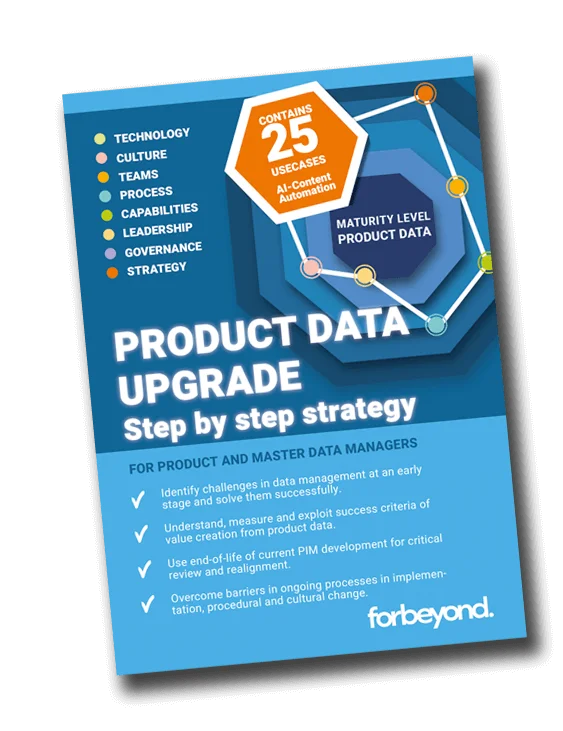Consulting: We pave the way for the automation of your product data
With our advice, you can future-proof the digitalization of your product content
Digital transformation presents companies with complex challenges, especially when it comes to managing product and master data and creating effective product content. forbeyond helps you to master these challenges in a targeted manner and future-proof your data strategy. We support you with independent advice in areas such as PIM, PXM and MDM.
This allows you to operate more efficiently, act with even greater foresight, reduce costs and secure competitive advantages. With an interdisciplinary team that combines technical expertise with industry know-how, forbeyond works closely with you and your teams to develop customized solutions for your digital processes.
Benefit from proven methods and best practices that ensure smooth project progress and sustainable results.
The big picture: more than just product data management
We develop a long-term strategy, optimize your processes, help you select suitable systems and support the technical implementation. We are vendor-neutral and independent, so you always get the best solution for your company. And because we see consulting as a process, we also support you in the practical implementation - from the integration of new systems to services relating to data maintenance and product content.
Core areas of our consulting:
Product Information
Management (PIM)

Product Experience Management (PXM)

Master Data Management (MDM)

Digital Asset Management (DAM)

Data Governance & Data Quality Management (DQM)

IT architecture, IT development (EAM)

Use the right consulting modules
No two projects are the same. Put our services together on a modular basis or enjoy the end-to-end service.
Strategy
We develop a future-proof strategy for your product data that combines market requirements, content quality and AI-supported automation. We ensure that your data is managed efficiently, used optimally and aligned across channels - always with your target group and future developments in mind.

Analysis & conception
We analyze your existing product data landscape, evaluate its future viability and identify potential for optimization and automation. In doing so, we define functional, technical and organizational requirements and take the IT structure into account in order to create a solid foundation for future developments

System selection
Choosing the right software is crucial for efficient product data management. We support you in finding the optimal solution for your requirements by using our extensive market knowledge, specifying technical requirements and guiding you through the entire selection process.

Implementation
We support you with the introduction of new systems, coordinate project management and represent your interests vis-à-vis system providers. On request, we can take on roles such as Program Manager or Product Owner and ensure that your organization can manage digital projects independently in the long term.

forbeyond
Use the full potential of your product data - we'll show you how!
Whether PIM, PXM or MDM - we help you to design the optimum system landscape, automate processes and improve your data quality in the long term. With our vendor-neutral advice and practice-oriented implementation, we ensure that you not only choose the best solution, but also integrate it successfully.
forbeyond.gateway
Control your product data processes centrally - automated, integrated and scalable.
Optimize YOUR PRODUCT DATA PROCESSES: AUTOMATED AND SCALABLE.
The functions of forbeyond.gateway are specifically designed to meet the challenges of product data management in industry and retail. Rule sets, mapping, automation and flexible interfaces ensure that processes are not only digital, but also efficient - from import to cross-channel playout.
"Data quality is no coincidence. Our solution ensures reproducible results with extraction, automated mapping and validation."
Janek Balster, Product Owner gateway at forbeyond


